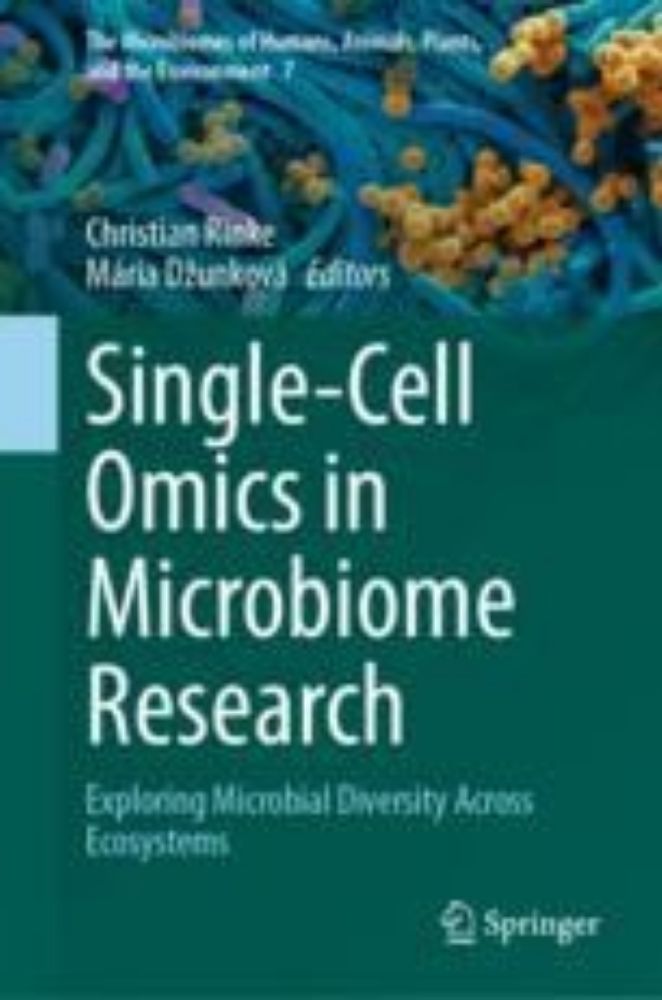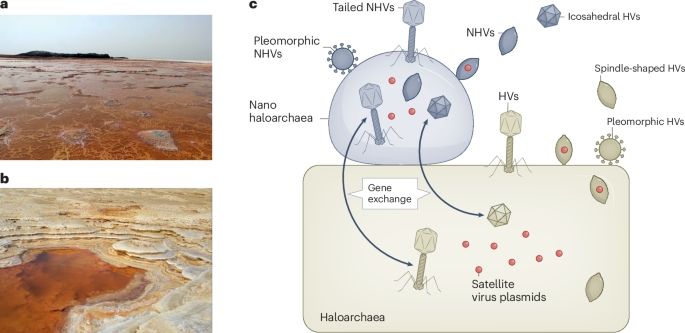
PostDoc in the MMG at IMEDEA (CSIC-UIB) and at INAGEA (UIB)
Microbial and viral intraspecies diversity & metagenomics
Also exploring RuBisCO gene diversity in extreme cold and hot environments through metagenomics
Join us in Auckland, New Zealand, from 16–21 August 2026, for the world’s leading meeting in microbial ecology.

Join us in Auckland, New Zealand, from 16–21 August 2026, for the world’s leading meeting in microbial ecology.
doi.org/10.1038/s415...
@benjwoodcroft.bsky.social @rhysnewell.bsky.social
🧵1/6

doi.org/10.1038/s415...
@benjwoodcroft.bsky.social @rhysnewell.bsky.social
🧵1/6

@chrisrinke.bsky.social and to all book contributors, coming from @i2sysbio.es, @jgi.doe.gov and many other institutes I couldn't find on BlueSky
link.springer.com/book/10.1007...
#microsky #singlecell #genomics 🧪🦠

@chrisrinke.bsky.social and to all book contributors, coming from @i2sysbio.es, @jgi.doe.gov and many other institutes I couldn't find on BlueSky
link.springer.com/book/10.1007...
#microsky #singlecell #genomics 🧪🦠

vConTACT3 delivers a unified, scalable, and transparent framework for genome-based virus taxonomy — helping translate big viral data into systematic classification.
🔗 Read the preprint: doi.org/10.1101/2025...
Improvements details below 👇

vConTACT3 delivers a unified, scalable, and transparent framework for genome-based virus taxonomy — helping translate big viral data into systematic classification.
🔗 Read the preprint: doi.org/10.1101/2025...
Improvements details below 👇
We present oligoN-design, a simple, reproducible and versatile open-source tool to design specific primers and probes directly from large environmental DNA datasets.
🔗 DOI: doi.org/10.1101/2025...
👉 github.com/MiguelMSandi...

We present oligoN-design, a simple, reproducible and versatile open-source tool to design specific primers and probes directly from large environmental DNA datasets.
🔗 DOI: doi.org/10.1101/2025...
👉 github.com/MiguelMSandi...
🦠📈💊
Our new work in @isme-microbes.bsky.social explores how the combined effects of warming & AMR may alter microbial C processing
🧵👇
academic.oup.com/ismej/articl...

🦠📈💊
Our new work in @isme-microbes.bsky.social explores how the combined effects of warming & AMR may alter microbial C processing
🧵👇
academic.oup.com/ismej/articl...
EMCG — droplet-based single-particle genomics method 🧬⚠️Sequencing marine microbes one by one — in nL of seawater!
Ultra-high resolution — no culture, no bulk averaging. A new way to see the invisible 🫥 🌊 rdcu.be/eOsUF #protistsonsky @bigelowlab.bsky.social

EMCG — droplet-based single-particle genomics method 🧬⚠️Sequencing marine microbes one by one — in nL of seawater!
Ultra-high resolution — no culture, no bulk averaging. A new way to see the invisible 🫥 🌊 rdcu.be/eOsUF #protistsonsky @bigelowlab.bsky.social


Metalog: curated and harmonised contextual data for global metagenomics samples
now out in @narjournal.bsky.social
academic.oup.com/nar/advance-...

Metalog: curated and harmonised contextual data for global metagenomics samples
now out in @narjournal.bsky.social
academic.oup.com/nar/advance-...
I wrote a short piece reflecting on the discovery and significance of this metric (and really enjoyed digging into the context and story behind it!) #microsky 🧬
I wrote a short piece reflecting on the discovery and significance of this metric (and really enjoyed digging into the context and story behind it!) #microsky 🧬
Postdoc position with lots of freedom available in my group
- 1.5 years with options to extend
- work on ecogenomics and physiology of N/CH4-cyclers
- remote work possible 🤓
more info here: isme-microbes.org/postdoc-ecog...
#microbesky
Postdoc position with lots of freedom available in my group
- 1.5 years with options to extend
- work on ecogenomics and physiology of N/CH4-cyclers
- remote work possible 🤓
more info here: isme-microbes.org/postdoc-ecog...
#microbesky

@noc.ac.uk @biopole.bsky.social @ird-fr.bsky.social @mioceanologie.bsky.social

@noc.ac.uk @biopole.bsky.social @ird-fr.bsky.social @mioceanologie.bsky.social
www.nature.com/articles/s41...
🧵⬇️
1/8

www.nature.com/articles/s41...
🧵⬇️
1/8
iapetus.ac.uk/studentships...

iapetus.ac.uk/studentships...
academic.oup.com/nar/advance-...

academic.oup.com/nar/advance-...
Join us and work with Bo Thamdrup and me on microbial dark oxygen production in marine oxygen minimum zones!
Please share widely!
Deadline: 17 November
More information can be found here:
tinyurl.com/2vuur3wh

Join us and work with Bo Thamdrup and me on microbial dark oxygen production in marine oxygen minimum zones!
Please share widely!
Deadline: 17 November
More information can be found here:
tinyurl.com/2vuur3wh
@erc.europa.eu #ERC_SIESTA
📢 PLEASE RT
🧬 Single cell microbial activity measurements, flow cytometry, cell sorting, omics, ecological interpretation
☀️ Marseille, France
‼️ Apply ASAP & before 7 Nov
Link: emploi.cnrs.fr/Offres/CDD/U...

@erc.europa.eu #ERC_SIESTA
📢 PLEASE RT
🧬 Single cell microbial activity measurements, flow cytometry, cell sorting, omics, ecological interpretation
☀️ Marseille, France
‼️ Apply ASAP & before 7 Nov
Link: emploi.cnrs.fr/Offres/CDD/U...

again, remember looking at physics when you try to understand how microbial communities are structured in the ocean

again, remember looking at physics when you try to understand how microbial communities are structured in the ocean


